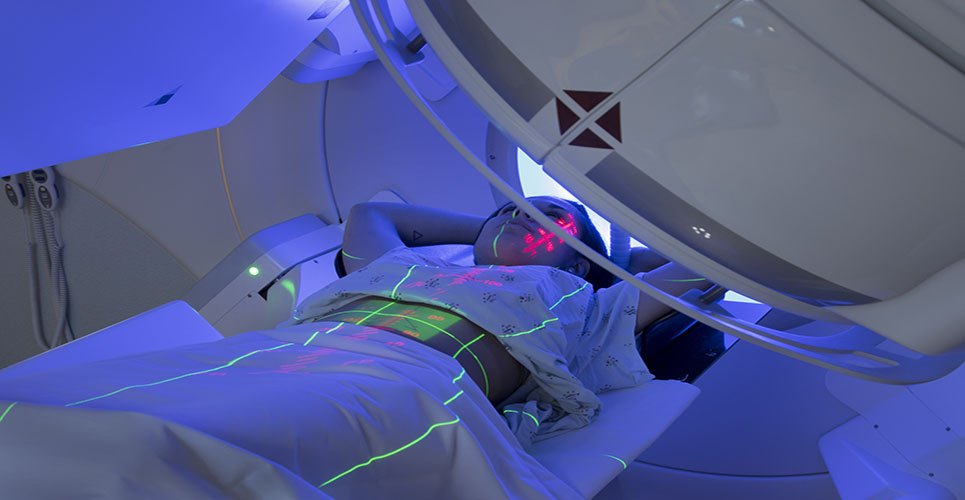teaser
Irene Kramer
PhD
Director
Pharmacy Department
Johannes Gutenberg University Hospital
Mainz
Germany
E: [email protected]
Chemoembolisation is an accepted treatment for eliminating tumours by blocking their blood supply. All particulate embolic agents cause thrombus formation around the particles and sealing of the vessel after delivery via a microcatheter. Subsequently the tumour undergoes necrosis and shrinkage. Transarterial chemoembolisation (TACE) involves selective arterial embolisation of a tumour’s feeding artery with simultaneous or subsequent local delivery of chemotherapeutic agents. The liver is the most common organ in which TACE is used. Primary liver cancer (HCC) and liver metastases are treated using several drugs, including 5-FU, doxorubicin and mitomycin C. Irinotecan is used for treatment of colorectal carcinoma metastases.
In conventional TACE, embolic products – such as Contour(R) PVA particles, Gelfoam(R) gelatine sponge or Embosphere(R) compressible microspheres, and mixtures of the contrast medium Lipiodol(R) together with a cytotoxic drug solution – are subsequently delivered. In contrast, drug-eluting beads are specifically designed for targeted chemoembolisation, combined with controlled loading and delivery of antineoplastic drugs. Drug-loaded microspheres, such as DC Beads(R), allow simultaneous local delivery of anticancer drugs and embolisation. The specific targeting of the drug at the site of the tumour would imply enhanced efficacy by maximised tumour dose and reduced toxicity by negligible systemic exposure.
PVA hydrogel microspheres (MS)
Hydrogel MS are nondegradable polymers based on polyvinylalcohol (PVA). MS are characterised by size, morphology, compressibility, immunogenicity and delivery performance. PVA is highly biocompatible (ie, immunogeneic reactions rarely occur). Hydrogel MS shrink or swell depending on environmental variables, notably pH, ionic strength and temperature.
Gel spheres (GS)/DC Beads, manufactured by Biocompatibles UK, are precisely calibrated and have a smooth surface. They are tinted with a dye to aid visualisation in the delivery syringe. The PVA macromer is synthesised using a suspension polymerisation method. The fully polymerised MS is >90% water and compressible 20-30% in diameter. DC Beads are characterised by their high AMPS (2-acrylamido-2-methylpropanesulphonate) content, constituting 45% of the total polymer weight. The unsaturated AMPS monomer crosslinks the PVA backbone and allows the loading and release of cationic drugs by an increased number of sulphonate moieties (see Figure 1). The positive charges of drugs facilitate loading and controlled delivery. Unsuccessful loading occurs with 5-FU, due to its anionic character. In Figure 2 the interaction of doxorubicin with the sulphonate groups of the GS is shown. Water molecules are displaced by doxorubicin molecules and the latter are uniformly distributed throughout the bead. On loading the volume of GS is reduced by up to 25%. Loading and elution of the drug molecule follows an ionic exchange mechanism.
[[HPE32_fig1_35]]
[[HPE32_fig2_36]]
Drug loading
DC Beads are supplied sterile in sealed glass vials as 1ml or 2ml in phosphate buffer solution (PBS), and are available in four size ranges (100-900mm). This allows selection of the most appropriate size for the target vessel. While loading the DC Beads with drugs, as much PBS as possible should be removed using a syringe with a normal-gauge needle. To stop beads being drawn up the needle, the needle’s flattened tip should be placed against the side of the vial. Vacuum should be eliminated using a second needle, as the beads float when air is introduced into the vial.
Appropriate amounts of doxorubicin solution 25mg/ml or irinotecan solution 20mg/ml are added using a syringe and needle. The suspension is agitated gently to encourage mixing, then allowed to stand until the DC Beads are loaded. The beads will appear either red or turquoise when loading of either doxorubicin or irinotecan is complete. Loading time depends on bead size for doxorubicin, but is independent of bead size for irinotecan (see Table 1).
[[HPE32_table1_36]]
The maximum load is 37.5mg doxorubicin per ml DC Bead (150mg in 4-6ml) or 50mg/ml irinotecan per ml DC Bead. Proprietary 2mg/ml doxorubicin solutions could also be used for loading, but need much longer loading time.
Provided the beads are prepared aseptically, DC Beads loaded with doxorubicin or epirubicin may be stored for up to seven days under refrigeration. Beads loaded with irinotecan may be stored for up to 24 hours, when refrigerated. Prior to use the drug-loaded beads are transferred to a syringe and an equal volume of nonionic contrast media is added. Beads are deliverable without aggregation or occlusion of the microcatheter. Compressibility and rigidity are maintained during delivery.
Preloaded drug delivery embolic MS will be available in the near future. Preparation of ready-to-use suspensions is characterised by a small number of manipulation steps and no waiting time.
Drug delivery from loaded DC Beads
Controlled delivery of the active ingredient from the DC Beads was shown by in vitro elution tests using a T-apparatus. Drug elution rate depends on bead size and drug loading concentration. Doxorubicin was eluted from a Lipiodol/doxorubicin mixture in less than four hours, while the elution half-life of doxorubicin ranged from six to 72 days depending on bead size.
Consistent drug delivery over an extended period should enhance tumour response with cell cycle specific drugs like doxorubicin. Clinical studies using TACE with drug-eluting beads in patients with HCC (precision I, II) showed low variability of C(max) and minimal systemic exposure to doxorubicin. Dosages up to 150mg doxorubicin are safe and effective, with no dose-related adverse events recognised.
Resources
Biocompatibles
W: www.biocompatibles.com
Further reading
Lewis AL, et al. DC Bead: in vitro characterization of a drug-delivery device for transarterial chemoembolization.
J Vasc Interv Radiol 2006;17:335-42.
Aliberti C, et al. Transarterial chemoembolization (TACE) of liver metastases from colorectal cancer using irinotecan-eluting beads: preliminary results. Anticancer Res 2006;26:3793-5.
Varela M, et al. Chemoembolization of hepatocellular carcinoma with drug-eluting beads: efficacy and doxorubicin pharmacokinetics.
J Hepatol 2007;46:474-81.
Hong K, et al. New intra-arterial drug delivery system for the treatment of liver cancer: preclinical assessment in a rabbit model of liver cancer.
Clin Cancer Res 2006;12:2563-7.

